Family
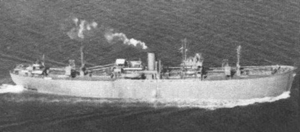
 When a ship explodes in a port, the first assumption is that terrorists attacked, but that is not always the case. On April 14, 1944, cargo ship Fort Stikine exploded in a berth in the docks of Bombay, India, which is now known as Mumbai. The catastrophic explosion killed 1,300 people and injured another 3,000. It’s possible that the reason it was considered terrorists, or in this case, Japanese sabotage, was because the incident happened during World War II. Nevertheless, the explosion was actually caused by a tragic accident.
When a ship explodes in a port, the first assumption is that terrorists attacked, but that is not always the case. On April 14, 1944, cargo ship Fort Stikine exploded in a berth in the docks of Bombay, India, which is now known as Mumbai. The catastrophic explosion killed 1,300 people and injured another 3,000. It’s possible that the reason it was considered terrorists, or in this case, Japanese sabotage, was because the incident happened during World War II. Nevertheless, the explosion was actually caused by a tragic accident.
The ship, The Fort Stikine was a Canadian-built steamship weighing 8,000 tons. On February 24, Fort Stikine left Birkenhead, England, making a stop in Karachi, Pakistan, before continuing on to dock at Bombay. The cargo on Fort Stikine that day included hundreds of cotton bales, gold bullion and, most notably, 300 tons of trinitrotoluene, better known as TNT or dynamite. I’m sure you can begin to get a picture of what might have triggered this tragic accident. Despite the well-known fact that cotton bales were prone to combustion, the 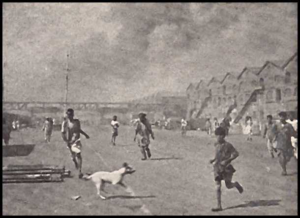 cotton was stored one level below the dynamite. I’m sure that with a little imagination, you can probably guess what happened next.
cotton was stored one level below the dynamite. I’m sure that with a little imagination, you can probably guess what happened next.
While the ship was being loaded with her cargo, someone noticed smoke coming from the cotton bales. Firefighters were sent to investigate, but emergency measures, such as flooding that part of the ship, were not immediately taken. Instead, about 60 firefighters tried to put out the fire with hoses throughout the afternoon. For some reason, the TNT was not unloaded during the firefighting efforts, creating a recipe for disaster. Before long, it became clear that the firefighters were not going to be able to get control of the fire, and they were ordered off the ship, but they kept dousing the fire from the docks. Unfortunately, their efforts were in vain. The TNT ignited, and at 4:07pm, and the resulting explosion rocked the bay area. The initial force of the blast actually lifted a nearby 4,000-ton ship from the bay onto the land. Windows shattered up to a mile away. A 28-pound gold bar from the Fort Stikine, worth many thousands of dollars, was found a mile away. Everyone in close vicinity of the ship was killed.
In addition to the Fort Stikine, twelve other ships at the docks were destroyed and many more were seriously damaged. The initial blast threw burning debris all over the port. Fires broke out, causing further explosions. In 
 desperation, military troops were brought in to fight the raging fires and some buildings were demolished just to stop it from spreading. For three days after the explosion, the main business center of Bombay was not safe for anyone to be in. A valuable lesson was learned, but at a horrible price. So many lives lost to learn that cotton and TNT should probably never be on the same ship, but if they are, the cotton should never be stored right below the TNT.
desperation, military troops were brought in to fight the raging fires and some buildings were demolished just to stop it from spreading. For three days after the explosion, the main business center of Bombay was not safe for anyone to be in. A valuable lesson was learned, but at a horrible price. So many lives lost to learn that cotton and TNT should probably never be on the same ship, but if they are, the cotton should never be stored right below the TNT.

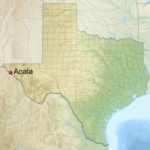 Acala, Texas was once a “thriving” community…well, ok, maybe not exactly thriving, but it the town’s “heydays” it had a population of about 100 people, who made a living raising Acala Cotton. No, it never was big, but the railroad once went through there to take the cotton crop to the market. Acala is located in Hudspeth County, Texas, approximately 34 miles northwest of Sierra Blanca and 54 miles southeast of El Paso on Highway 20. These days the population is approximately 25 people, making Acala more of a ghost town than the unincorporated community that it is technically listed as.
Acala, Texas was once a “thriving” community…well, ok, maybe not exactly thriving, but it the town’s “heydays” it had a population of about 100 people, who made a living raising Acala Cotton. No, it never was big, but the railroad once went through there to take the cotton crop to the market. Acala is located in Hudspeth County, Texas, approximately 34 miles northwest of Sierra Blanca and 54 miles southeast of El Paso on Highway 20. These days the population is approximately 25 people, making Acala more of a ghost town than the unincorporated community that it is technically listed as.
The area was first settled in the early 20th century. In 1917, three farmers combined their resources to plant experimental cotton near Tornillo, about 13 miles northwest of what is now Acala, Texas. Successful the first year, the men purchased more land the next year to grow irrigated cotton. Hearing about the success of these f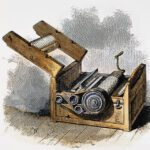 armers, a man named WT Young came to the area from El Paso to try his hand at cotton farming, but Young would bring much more to the area than cotton. He bought a large piece of cheap desert land near the Southern Pacific Railroad tracks southeast of Tornillo. Using mules to clear the brush and break the soil for the first time, he planted a Mexican variety of cottonseed called Acala. He was so successful that he built his own cotton gin at the site now known as Acala. It wasn’t the first cotton gin, which was built by Eli Whitney, but it was a cotton gin, and it revolutionized Acala.
armers, a man named WT Young came to the area from El Paso to try his hand at cotton farming, but Young would bring much more to the area than cotton. He bought a large piece of cheap desert land near the Southern Pacific Railroad tracks southeast of Tornillo. Using mules to clear the brush and break the soil for the first time, he planted a Mexican variety of cottonseed called Acala. He was so successful that he built his own cotton gin at the site now known as Acala. It wasn’t the first cotton gin, which was built by Eli Whitney, but it was a cotton gin, and it revolutionized Acala.
The town began to grow, and a post office was established in 1925. It was operated by Mrs Julia Vaughn. By 1929, the population had doubled from 50 people to its peak of 100 people. The population varied over the years, peaking again in the late 1950s, at 100 people. Unfortunately, the town could not maintain the population, and soon declined, once again. By the 1970’s there were about 25 people. Since then, it has remained at that size. Acala is in the Fort Hancock Independent School District. Fort Hancock High School is the district’s comprehensive high school.
The United States Census Bureau first listed Acala as a census-designated place prior to the 2020 census. A 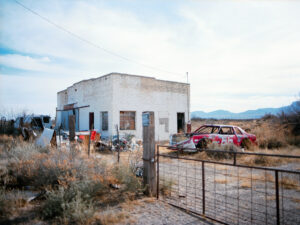
 census-designated place (CDP) is a statistical geography representing closely settled, unincorporated communities that are locally recognized and identified by name. The designation doesn’t necessarily add any importance or value to the town, however. Nevertheless, the fact that it was at one time a successful agricultural area and operated a successful cotton gin, gives it definite historical value.
census-designated place (CDP) is a statistical geography representing closely settled, unincorporated communities that are locally recognized and identified by name. The designation doesn’t necessarily add any importance or value to the town, however. Nevertheless, the fact that it was at one time a successful agricultural area and operated a successful cotton gin, gives it definite historical value.

 My sister-in-law, Jennifer Parmely has spent most of her adult life as a Labor and Delivery nurse at Wyoming Medical Center, but this past year, all that changed when Jennifer retired on February 28, 2023. Now, she has more than passed the first full year of her retirement. Sometimes, I wonder how she feels about the fact that she isn’t part of the intense, exciting daily deliveries of babies that she spent so many years experiencing. Like most professionals, Jennifer took the necessary continuing education courses to hold onto her license for one more year. When you have worked so hard to obtain that professional degree that has defined your life for so many years, you aren’t so keen on letting your licensing go. Not just yet…even though retirement is what you really want and what you have worked for.
My sister-in-law, Jennifer Parmely has spent most of her adult life as a Labor and Delivery nurse at Wyoming Medical Center, but this past year, all that changed when Jennifer retired on February 28, 2023. Now, she has more than passed the first full year of her retirement. Sometimes, I wonder how she feels about the fact that she isn’t part of the intense, exciting daily deliveries of babies that she spent so many years experiencing. Like most professionals, Jennifer took the necessary continuing education courses to hold onto her license for one more year. When you have worked so hard to obtain that professional degree that has defined your life for so many years, you aren’t so keen on letting your licensing go. Not just yet…even though retirement is what you really want and what you have worked for. 
Jennifer and her partner, Brian Cratty have a cabin on Casper Mountain, and they love spending time up there. They go hiking, skiing, bicycling, and just enjoying the peace and quiet. They have also traveled to many areas to do more hiking. It is their passion. Jennifer had the opportunity to go hiking in New Zealand, and thoroughly enjoyed it. They have hiked some very high mountain trails too. They also love to ski, both downhill and cross country. They spend lots of time at their cabin and love having their kids come up too.
Jennifer is Oma to her four grandchildren and enjoys having them spend the night and just hang out. Every year on their birthdays, they each get a solo shopping trip with her, and she bakes them the cake of their choice. She loves being Oma, which is German for Grandma, and was the name she chose for herself as a way 
 to keep from confusing the kids when they were little. I remember calling her “Grandma” to one of them, and she looked at me quizzically, as if to say…Who? That was because she knew that I meant her Oma, and not her Grandma, which is her other Grandma. Hahaha!! Confused yet!! I was, but I learned quickly the right thing to call her!! Now it’s second nature. Jennifer is very happy being Oma to her three granddaughters and her grandson. Today is Jennifer’s birthday. Happy birthday Jennifer!! Have a great day!! We love you!!
to keep from confusing the kids when they were little. I remember calling her “Grandma” to one of them, and she looked at me quizzically, as if to say…Who? That was because she knew that I meant her Oma, and not her Grandma, which is her other Grandma. Hahaha!! Confused yet!! I was, but I learned quickly the right thing to call her!! Now it’s second nature. Jennifer is very happy being Oma to her three granddaughters and her grandson. Today is Jennifer’s birthday. Happy birthday Jennifer!! Have a great day!! We love you!!
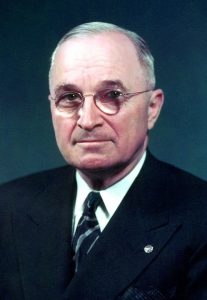 In any “job” or “career” there can be conflicts. Sometimes it’s all about workmanship, and other times it’s a personality conflict. Probably the most famous of these conflicts was the civilian-military confrontation between President Harry S Truman and General Douglas MacArthur who was in command of the US forces in Korea. When Truman relieved MacArthur of duty, in reality, firing him, it set off a brief uproar among the American public. Nevertheless, Truman was determined to keep the conflict in Korea a “limited war” at all costs.
In any “job” or “career” there can be conflicts. Sometimes it’s all about workmanship, and other times it’s a personality conflict. Probably the most famous of these conflicts was the civilian-military confrontation between President Harry S Truman and General Douglas MacArthur who was in command of the US forces in Korea. When Truman relieved MacArthur of duty, in reality, firing him, it set off a brief uproar among the American public. Nevertheless, Truman was determined to keep the conflict in Korea a “limited war” at all costs.
General MacArthur was considered flamboyant and egotistical, and problems between him and President Truman had been brewing for months. The Korean War began in June of 1950, and in those early days of the war in Korea, MacArthur had devised some brilliant strategies and military maneuvers that helped save South Korea from falling to the invading forces of communist North Korea. As United States and United Nations forces began turning the tide of battle in Korea, MacArthur began to argue for a policy of pushing into North Korea to completely defeat the communist forces. Truman initially went along with the plan, but he was also worried that the communist government of the People’s Republic of China might take the invasion as a hostile act and intervene in the conflict. Thus began a battle of wills between the two men. MacArthur met with Truman in October 1950, and assured him that the chances of a Chinese intervention were slim.
Unfortunately, that “slim chance” materialized in November and December 1950, when hundreds of thousands of Chinese troops crossed into North Korea and throwing themselves against the American lines, driving the US troops back into South Korea. At that point, MacArthur requested permission to bomb communist China and use Nationalist Chinese forces from Taiwan against the People’s Republic of China. Truman refused these requests point blank, and a very public and very heated argument began to develop between the two men.
Then, in April 1951, President Truman fired MacArthur and replaced him with General Matthew Ridgway. The nation was outraged, but on April 11, Truman addressed the nation and explained his actions. Truman defended his overall policy in Korea, by declaring, “‘It is right for us to be in Korea.’ He excoriated the ‘communists in the Kremlin [who] are engaged in a monstrous conspiracy to stamp out freedom all over the world.’ Nevertheless, he explained, it ‘would be wrong—tragically wrong—for us to take the initiative in extending the war… Our aim is to avoid the spread of the conflict.’ The president continued, ‘I believe that we must try to limit the war to 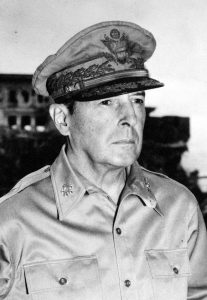 Korea for these vital reasons: To make sure that the precious lives of our fighting men are not wasted; to see that the security of our country and the free world is not needlessly jeopardized; and to prevent a third world war.’ General MacArthur had been fired ‘so that there would be no doubt or confusion as to the real purpose and aim of our policy.'”
Korea for these vital reasons: To make sure that the precious lives of our fighting men are not wasted; to see that the security of our country and the free world is not needlessly jeopardized; and to prevent a third world war.’ General MacArthur had been fired ‘so that there would be no doubt or confusion as to the real purpose and aim of our policy.'”
Nevertheless, MacArthur returned to the United States to a hero’s welcome. “Parades were held in his honor, and he was asked to speak before Congress (where he gave his famous ‘Old soldiers never die, they just fade away’ speech). Public opinion was strongly against Truman’s actions, but the president stuck to his decision without regret or apology. Eventually, MacArthur did ‘just fade away,’ and the American people began to understand that his policies and recommendations might have led to a massively expanded war in Asia. Though the concept of a ‘limited war,’ as opposed to the traditional American policy of unconditional victory, was new and initially unsettling to many Americans, the idea came to define the U.S. Cold War military strategy.”
 The USS Miami (SSN-755) was a Los Angeles-class submarine of the United States Navy. Ships and submarines are commonly named after cities and people, and the USS Miami submarine was the third vessel of the US Navy to be named after Miami, Florida. The USS Miami was also the forty-fourth Los Angeles-class (688) submarine and the fifth Improved Los Angeles-class (688I) submarine to be built and commissioned. The Electric Boat division of General Dynamics Corporation in Groton, Connecticut, won the contract on November 28, 1983. The keel was laid down on October 24, 1986, and USS Miami launched on November 12, 1988. She was commissioned on June 30, 1990 with Commander Thomas W Mader in command.
The USS Miami (SSN-755) was a Los Angeles-class submarine of the United States Navy. Ships and submarines are commonly named after cities and people, and the USS Miami submarine was the third vessel of the US Navy to be named after Miami, Florida. The USS Miami was also the forty-fourth Los Angeles-class (688) submarine and the fifth Improved Los Angeles-class (688I) submarine to be built and commissioned. The Electric Boat division of General Dynamics Corporation in Groton, Connecticut, won the contract on November 28, 1983. The keel was laid down on October 24, 1986, and USS Miami launched on November 12, 1988. She was commissioned on June 30, 1990 with Commander Thomas W Mader in command.
All that is fairly normal and mundane, but USS Miami was to have some much more “exciting” for lack of a better word, times in her future. USS Miami became the first submarine to conduct combat operations in two theaters since World War II, participating in Operation Desert Fox and Operation Allied Force. The submarine also became a movie star when she was featured in The Learning Channel (TLC) Extreme Machine episode on “Nuclear Submarines” but that was not even the craziest event in her history.
On May 23, 2012, at 5:41pm EDT, fire crews were called out with a report of a fire on the USS Miami. At the 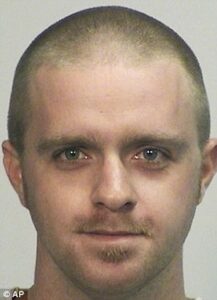 time, she was being overhauled at the Portsmouth Naval Shipyard in Kittery, Maine. That would seem like a fairly safe place to be, but I suppose that anytime work is being done, accidents could happen. On that day, USS Miami was in the second month of a scheduled 20-month maintenance cycle. That meant that the “Engineering Overhaul” she was undergoing was extensive. The fire was a major one that injured seven firefighters. In addition, one crew member suffered broken ribs when he fell through a hole left by removed deck plates during the fire. The fire took 12 hours to extinguish.
time, she was being overhauled at the Portsmouth Naval Shipyard in Kittery, Maine. That would seem like a fairly safe place to be, but I suppose that anytime work is being done, accidents could happen. On that day, USS Miami was in the second month of a scheduled 20-month maintenance cycle. That meant that the “Engineering Overhaul” she was undergoing was extensive. The fire was a major one that injured seven firefighters. In addition, one crew member suffered broken ribs when he fell through a hole left by removed deck plates during the fire. The fire took 12 hours to extinguish.
At first, the US Navy said that the blaze was caused by an industrial vacuum cleaner that was used “to clean worksites on the sub after shipyard workers’ shifts” that had sucked up a heat source that ignited debris inside the vacuum. However, on July 23, 2012, civilian painter and sandblaster Casey J Fury was indicted on two counts of arson after confessing to starting the fire. The reason for Fury’s actions really makes no sense to me. Fury said he lit rags on a berthing compartment’s top bunk so he could get out of work early…seriously!! That is insane, but then I guess any reason for arson has a degree of insanity attached to it. Still, this is the most bizarre reason I can think of. For Pete’s sake, tell your boss you need to be off early, or just quit. The consequences of this action were about to be heavy. On March 15, 2013, Fury was sentenced to more than 17 years in federal prison and ordered to pay $400 million in restitution. Casey Fury is still serving his 17-year prison sentence. He is scheduled to be released on August 4, 2027
For more than a year, the USS Miami’s fate was up in the air. Within a month of the fire, Maine Senators Susan 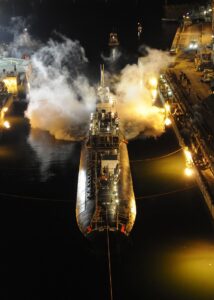 Collins and Olympia Snowe advocated for repairing the submarine. Navy leaders asked Congress to add $220 million to the operations and maintenance budget for emergent and unfunded ship repairs in July 2012. In August, the Navy decided to repair the boat for an estimated total cost of $450 million. They planned to reduce the repair cost by using spare parts from the recently decommissioned USS Memphis and by repairing rather than replacing damaged hull sections, as had been done with another Los Angeles-class boat, USS San Francisco. Unfortunately, these plans wouldn’t work for the USS Miami which was newer and so the parts and such were not available. In the end, the repairs would have cost an estimated $700 million.
Collins and Olympia Snowe advocated for repairing the submarine. Navy leaders asked Congress to add $220 million to the operations and maintenance budget for emergent and unfunded ship repairs in July 2012. In August, the Navy decided to repair the boat for an estimated total cost of $450 million. They planned to reduce the repair cost by using spare parts from the recently decommissioned USS Memphis and by repairing rather than replacing damaged hull sections, as had been done with another Los Angeles-class boat, USS San Francisco. Unfortunately, these plans wouldn’t work for the USS Miami which was newer and so the parts and such were not available. In the end, the repairs would have cost an estimated $700 million.
Finally, on August 6, 2013, the US Navy announced its intention to decommission USS Miami, because the cost was more than it could afford in a time of budget cuts. For the USS Miami it was a sad defeat. The sub was officially decommissioned on March 28, 2014, to be scrapped by the Ship-Submarine Recycling Program.

 I think every kid has played with a yo-yo at one time or another, but the reality is that the yo-yo was not originally designed to be a toy. It was actually a weapon used in the Philippian jungle. The original yo-yo was not designed by, but rather was promoted by DF Duncan Sr who was also the co-patent holder of a four-wheel hydraulic automobile brake and the marketer of the first successful parking meter. In addition, he was the genius behind the first premium incentive where you sent in two cereal box tops and received a toy rocket ship. He was quite the success, nevertheless, Duncan is best known for promoting the first great yo-yo fad in the United States.
I think every kid has played with a yo-yo at one time or another, but the reality is that the yo-yo was not originally designed to be a toy. It was actually a weapon used in the Philippian jungle. The original yo-yo was not designed by, but rather was promoted by DF Duncan Sr who was also the co-patent holder of a four-wheel hydraulic automobile brake and the marketer of the first successful parking meter. In addition, he was the genius behind the first premium incentive where you sent in two cereal box tops and received a toy rocket ship. He was quite the success, nevertheless, Duncan is best known for promoting the first great yo-yo fad in the United States.
Duncan was not the inventor of the yo-yo. They have been around for over twenty-five hundred years…who knew. The yo-yo is hailed as the second oldest toy in history, second only to the doll. The yo-yo was made out of wood, metal, and terra cotta when used in ancient Greece. Around 1800, the yo-yo moved into Europe from the Orient. It was not always called a yo-yo either, of course. The British called the yo-yo the bandalore, quiz, or the Prince of Wales toy. The French used the name incroyable or l’emigrette. “Yo-yo” is actually a Tagalog word, the native language of the Philippines, and means “come back.” While it appeared on the European scene in 1800, it was actually in the Philippines, being used as a weapon for over 400 years. The Philippian version was large with sharp edges and studs and attached to thick twenty-foot ropes for flinging at enemies or prey. The fact that it was attached to a rope is truly about the only real similarity to the yo-yos of today.
In the 1860s, people in the United States started playing with the British bandalore, but it was not until the 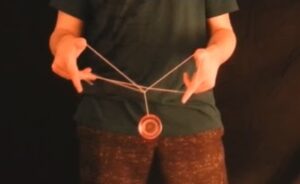 1920s that Americans first heard the word yo-yo. That was when Philippian immigrant, Pedro Flores, began manufacturing a toy labeled yo-yo. With that, Flores became the first person to mass-produce toy yo-yos, at his small toy factory located in California. Duncan saw the Flores toy and liked it. He bought the rights from Flores in 1929, then trademarked the name “Yo-Yo” and a true fad was born. Of course, Duncan also made some improvements to the toy, first adding the slip string, which consisted of a sliding loop around the axle instead of a knot. With this revolutionary improvement, the yo-yo could do a trick called “sleep” for the first time. The original shape, first introduced to the United States was the imperial or standard shape, but later, Duncan introduced the butterfly shape, a design that reverses the halves of a traditional imperial yo-yo. The butterfly shape allowed the player to catch the yo-yo on the string easily, which expanded the tricks it could do. With that, the yo-yo gained the popularity most of us remember it for.
1920s that Americans first heard the word yo-yo. That was when Philippian immigrant, Pedro Flores, began manufacturing a toy labeled yo-yo. With that, Flores became the first person to mass-produce toy yo-yos, at his small toy factory located in California. Duncan saw the Flores toy and liked it. He bought the rights from Flores in 1929, then trademarked the name “Yo-Yo” and a true fad was born. Of course, Duncan also made some improvements to the toy, first adding the slip string, which consisted of a sliding loop around the axle instead of a knot. With this revolutionary improvement, the yo-yo could do a trick called “sleep” for the first time. The original shape, first introduced to the United States was the imperial or standard shape, but later, Duncan introduced the butterfly shape, a design that reverses the halves of a traditional imperial yo-yo. The butterfly shape allowed the player to catch the yo-yo on the string easily, which expanded the tricks it could do. With that, the yo-yo gained the popularity most of us remember it for.
Donald Duncan saw huge potential in the yo-yo, and he worked out a deal with the newspaper tycoon William Randolph Hearst to get free advertising in Heart’s newspapers. Duncan traded advertising for competitions that required the entrants to bring a number of new subscriptions for the newspaper as their entry fee.
The first Duncan Yo-Yo was the O-Boy Yo-Yo Top, the toy with a big hit with people of all ages. Duncan’s massive factory produced 3,600 yo-yos every hour making the factory’s hometown of Luck, Wisconsin the Yo-Yo 
 Capital of the World. Duncan’s early media blitzes were so successful that in Philadelphia alone, three million units sold during a month-long campaign in 1931. Nevertheless, as with most toys, the next big thing comes along and the sales drop. The yo-yo was no exception to the rule. Basically, yo-yo sales went up and down as often as the toy, however, it is said that in order to recover their losses in the 1930s, Lego company decided, after being stuck with a huge inventory of yo-yos decided to salvage the unsold toys by sawing each yo-yo in half and using them as wheels on toy trucks and cars.
Capital of the World. Duncan’s early media blitzes were so successful that in Philadelphia alone, three million units sold during a month-long campaign in 1931. Nevertheless, as with most toys, the next big thing comes along and the sales drop. The yo-yo was no exception to the rule. Basically, yo-yo sales went up and down as often as the toy, however, it is said that in order to recover their losses in the 1930s, Lego company decided, after being stuck with a huge inventory of yo-yos decided to salvage the unsold toys by sawing each yo-yo in half and using them as wheels on toy trucks and cars.
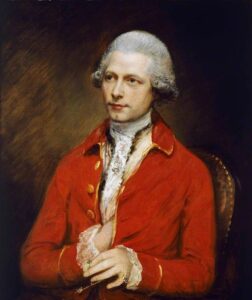
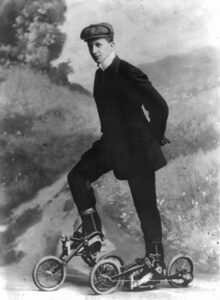 John Joseph Merlin, who was actually born Jean-Joseph Merlin, was a Belgian clockmaker, musical-instrument maker, and inventor. Born on September 6, 1735, in Huy, a town in what was then the Prince-Bishopric of Liège and is now in Belgium, Wallonia. His parents Maximilien Joseph Merlin (a blacksmith) and his wife Marie-Anne Levasseur. Merlin’s parents had married in 1732, and Merlin was the third of six children. Sadly, his mother died when he was eight. His father remarried at least once, to Marie Therese Dechesalle in 1743, and had another child, Charles Merlin. The family moved several times. From ages 19 to 25, Merlin lived in Paris, where he was involved in the Paris Academy of Sciences.
John Joseph Merlin, who was actually born Jean-Joseph Merlin, was a Belgian clockmaker, musical-instrument maker, and inventor. Born on September 6, 1735, in Huy, a town in what was then the Prince-Bishopric of Liège and is now in Belgium, Wallonia. His parents Maximilien Joseph Merlin (a blacksmith) and his wife Marie-Anne Levasseur. Merlin’s parents had married in 1732, and Merlin was the third of six children. Sadly, his mother died when he was eight. His father remarried at least once, to Marie Therese Dechesalle in 1743, and had another child, Charles Merlin. The family moved several times. From ages 19 to 25, Merlin lived in Paris, where he was involved in the Paris Academy of Sciences.
He moved to England in 1760. He began working with a man named James Cox in 1766, creating automatons such as Cox’s timepiece and the Silver Swan. He really took to the work, and by 1773 he was designing and making innovative keyboard instruments. In 1783, Merlin decided to do something new, so he opened Merlin’s Mechanical Museum in Princes Street, Hanover Square, London, which became a meeting-place for the gentry and nobility. At this point, Merlin expanded his horizons, and in addition to his clocks, musical instruments and automata, he invented inline skates…in the 1760s.
Merlin invented inline skates, which he called skaites. Merlin’s skaiteshad two wheels in the 1760s. The skaites were mentioned by Thomas Busby’s Concert Room and Orchestra Anecdotes (1805). The mention was not would have been exactly complimentary either, because it mentions an accident Merlin had while demonstrating his skaites.
“One of his ingenious novelties was a pair of skaites contrived to run on wheels. Supplied with these and a violin, he mixed in the motley group of one of Mrs Cowleys’ masquerades at Carlisle House; when not having provided the means of retarding his velocity, or commanding its direction, he impelled himself against a mirror of more than five hundred pounds value, dashed it to atoms, broke his instrument to pieces and wounded himself most severely.”
In case that all sounded a little confusing, let me simplify. Basically, Merlin didn’t practice using…or rather stopping, his skaites before he demonstrated them. His “stumbling” start aside, Merlin went on to invention other things, including a self-propelled wheelchair, a prosthetic device for “a person born with stumps only,” whist cards for the blind, a pump for expelling “foul air,” a communication system for summoning servants, a 
 pedal-operated revolving tea table, and a mechanical chariot with an early form of odometer. Merlin died in Paddington, London on 8 May 1803. His collection was sold to Thomas Weeks of Great Windmill Street. Weeks died in 1834, at which time Merlin’s creations were auctioned off with Weeks’ other possessions. One of Merlin’s automatons, a dancer with an automated bird, was bought at the auction by Charles Babbage for 35 pounds. He had seen it as a child at Merlin’s Mechanical Museum.
pedal-operated revolving tea table, and a mechanical chariot with an early form of odometer. Merlin died in Paddington, London on 8 May 1803. His collection was sold to Thomas Weeks of Great Windmill Street. Weeks died in 1834, at which time Merlin’s creations were auctioned off with Weeks’ other possessions. One of Merlin’s automatons, a dancer with an automated bird, was bought at the auction by Charles Babbage for 35 pounds. He had seen it as a child at Merlin’s Mechanical Museum.

 My niece, Chantel Balcerzak has been having a wonderful year. Her daughter, Siara Kirk and Siara’s husband, Chris bought that house next door to Chantel and her husband, Dave earlier this year. They quickly renovated the house, because they were having a baby boy named Nathaniel Andrew Kirk on January 15, 2024. It has been so nice for Chantel and Dave to have them living right next door, because Chantel and Siara are very close. Now that baby Nathaniel is a couple of months old, Siara is getting ready to go back to work, he will be spending his days with his grandma and his daddy. While it will be really hard on Siara, she knows that her sweet boy will be is good hands and having fun. I have always thought it would be cool to have my grandchildren live within walking distance of me. Of course, that doesn’t always work out, but the most important thing is to be close to them in hearts, if not in distance. One is as important as the other. I’m so excited for Chantel to have this precious time with her newest grandson.
My niece, Chantel Balcerzak has been having a wonderful year. Her daughter, Siara Kirk and Siara’s husband, Chris bought that house next door to Chantel and her husband, Dave earlier this year. They quickly renovated the house, because they were having a baby boy named Nathaniel Andrew Kirk on January 15, 2024. It has been so nice for Chantel and Dave to have them living right next door, because Chantel and Siara are very close. Now that baby Nathaniel is a couple of months old, Siara is getting ready to go back to work, he will be spending his days with his grandma and his daddy. While it will be really hard on Siara, she knows that her sweet boy will be is good hands and having fun. I have always thought it would be cool to have my grandchildren live within walking distance of me. Of course, that doesn’t always work out, but the most important thing is to be close to them in hearts, if not in distance. One is as important as the other. I’m so excited for Chantel to have this precious time with her newest grandson.
Besides being a grandmother, Chantel is an amazing artist. We have several in our family. I, however, am not one of them. Nevertheless, I very much appreciate the work of those artists around me. Chantel has a kind heart, that sees the beauty around her. Her home reflects the beauty that is in her spirit…and a beautiful spirit it is. Chantel has a gentleness that not everyone possesses. It is just a part of who she is. Some people just seem to belong in a gentler time…and Chantel is one of those. Even her home reflects that. I always think that her home has a Victorian flair to it. Personally, I love the Victorian era designs. I’m not sure exactly what Chantel’s design style of choice is, but I think that whatever you might call it, I would call is very pretty. She has even helped Siara with the decoration of her new home. Siara shares many of her mom’s artistic abilities. 
 They have decorated a few places together, and both are very capable.
They have decorated a few places together, and both are very capable.
Chantel has truly embraced the role of grandmother. She as several other grandchildren too, and she enjoys spending time with all of them. Chantel is young at heart. I think she always will be. That has made her a great mom and grandmother. Chantel is my first niece. She was always a sweet little diva, and fashionista. Maybe it was her artistic abilities showing themselves at a very young age. I’m sure it was. Chantel hasn’t really changed all that much over the years, after all. Today is Chantel’s birthday. Happy birthday Chantel!! Have a great day!! We love you!!
 Sports at the Olympics have changed over the years. Things have been added that we would never have expected, and some didn’t even seem like they were a sport exactly. One of those strange “sports” that were once a part of the Olympics was the Tug-of-war. It is sport-like I guess, so that at least puts it in the right classification. It is comprised of two teams, who go against each other, so in that way, it fits too. Still, it has always seemed more like a revenge battle than an Olympic sport to me. Nevertheless, once a sport is voted in by the International Olympic Committee (IOC), it becomes an official sport in the Olympics. There are requirements, of course. The IOC requires “that the activity have administration by an international nongovernmental organization that oversees at least one sport. Once a sport is recognized, it then moves to International Sports Federation (IF) status.” A sport can be taken out of the Olympics too, and probably just as easily.
Sports at the Olympics have changed over the years. Things have been added that we would never have expected, and some didn’t even seem like they were a sport exactly. One of those strange “sports” that were once a part of the Olympics was the Tug-of-war. It is sport-like I guess, so that at least puts it in the right classification. It is comprised of two teams, who go against each other, so in that way, it fits too. Still, it has always seemed more like a revenge battle than an Olympic sport to me. Nevertheless, once a sport is voted in by the International Olympic Committee (IOC), it becomes an official sport in the Olympics. There are requirements, of course. The IOC requires “that the activity have administration by an international nongovernmental organization that oversees at least one sport. Once a sport is recognized, it then moves to International Sports Federation (IF) status.” A sport can be taken out of the Olympics too, and probably just as easily. 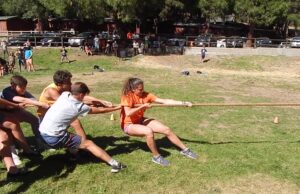
Tug of War was part of the Olympic schedule between 1900 and 1920. It was part of 5 different Summer Olympic Games. It seems such an odd thing to have a Tug-of-war…a school battle game as a serious part of such prestigious games. Nevertheless, here they were. The nation to win the most medals in Tug-of-war was Britain, having taken five medals. They were followed by the USA with three.
Tug-of-War was removed from the Olympic Program after the 1920 Games along with 33 other sports. The reason behind the removals was that the IOC decided there were too many sports and too many participants competing, so the decision was made to remove a number of sports, and unfortunately, one of those was Tug-of-War. I’m not sure why that seems sad to me, except that it had persevered up to that point, only to be pulled out of the Olympics…THE OLYMPICS!! 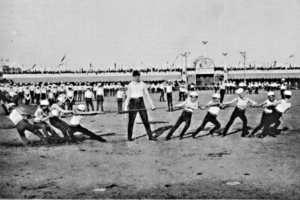 Somehow, it seems unfair. Such a big event, and to think that this sport that Tug-of-War was dropped from the Olympic program. Nevertheless, after Antwerp 1920, it was dropped. Leading up to the 1920 removal, was the 1912 Olympics when a number of countries withdrew from the Tug-of-War competition. That meant that the only match that occurred was between Great Britain and Sweden. The battle was a hard-won victory for Sweden, who eventually won after the British team sat down in the second pull, leading to their disqualification. That was the end of it. It just seems so sad to me…because at one time, it was an accepted event, a worthy battle, and now it was over.
Somehow, it seems unfair. Such a big event, and to think that this sport that Tug-of-War was dropped from the Olympic program. Nevertheless, after Antwerp 1920, it was dropped. Leading up to the 1920 removal, was the 1912 Olympics when a number of countries withdrew from the Tug-of-War competition. That meant that the only match that occurred was between Great Britain and Sweden. The battle was a hard-won victory for Sweden, who eventually won after the British team sat down in the second pull, leading to their disqualification. That was the end of it. It just seems so sad to me…because at one time, it was an accepted event, a worthy battle, and now it was over.
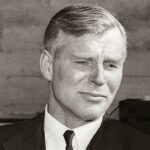
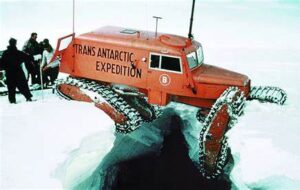 Over the centuries, there have been many exploratory expeditions all over the world. Some were privately financed, while others were financed by groups, governments, kings and as in the case of the 1955 to 1958 expedition to Antartica, the Commonwealth of England. The Commonwealth Trans-Antarctic Expedition (CTAE) was an expedition that successfully completed the first overland crossing of Antarctica, by way of the South Pole. It was also the first expedition to reach the South Pole overland for 46 years. t was preceded only by Amundsen’s expedition and Scott’s expedition in 1911 and 1912. Antartica is a fierce, snow and ice covered, wilderness, which makes me wonder why anyone would want to be on an expedition there. Nevertheless, I suppose that it’s the adventure of it that attracts so many to attempts it.
Over the centuries, there have been many exploratory expeditions all over the world. Some were privately financed, while others were financed by groups, governments, kings and as in the case of the 1955 to 1958 expedition to Antartica, the Commonwealth of England. The Commonwealth Trans-Antarctic Expedition (CTAE) was an expedition that successfully completed the first overland crossing of Antarctica, by way of the South Pole. It was also the first expedition to reach the South Pole overland for 46 years. t was preceded only by Amundsen’s expedition and Scott’s expedition in 1911 and 1912. Antartica is a fierce, snow and ice covered, wilderness, which makes me wonder why anyone would want to be on an expedition there. Nevertheless, I suppose that it’s the adventure of it that attracts so many to attempts it.
Traditionally, polar expeditions of the Heroic Age of Antarctic Exploration were private ventures, and the CTAE was no exception, even though it was supported by the governments of the United Kingdom, New Zealand, United States, Australia and South Africa, as well as many corporate and individual donations, under the patronage of Queen Elizabeth II. The expedition was headed by British explorer Vivian Fuchs and included New Zealander Sir Edmund Hillary. The group from New Zealand included scientists who were participating in International Geophysical Year research while the British team were separately based at Halley Bay.
Fuchs took the Danish Polar vessel, Magga Dan and went for additional supplied, returning in December 1956. The southern summer of 1956–1957 was spent consolidating Shackleton Base and establishing the smaller South Ice Base, located about 300 miles inland to the south. The winter of 1957 found Fuchs at Shackleton Base. Then, finally, he set out on the transcontinental journey in November 1957. The twelve-man team traveled in six vehicles, three Sno-Cats, two Weasel tractors, and one specially adapted Muskeg tractor. While they traveled, the team was also tasked with carrying out scientific research including seismic soundings and 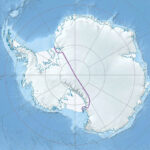 gravimetric readings. This was, after all a scientific expedition.
gravimetric readings. This was, after all a scientific expedition.
Hillary’s team began setting up Scott Base. This was going to be the final destination for Fuchs. It was located on the opposite side of the continent at McMurdo Sound on the Ross Sea. Using three converted Ferguson TE20 tractors and one Weasel, which had to be abandoned part-way, Hillary and his three men…Ron Balham, Peter Mulgrew, and Murray Ellis…were responsible for route-finding and laying a line of supply depots up the Skelton Glacier and across the Polar Plateau on towards the South Pole, for the use of Fuchs on the final leg of his journey. The remaining member of Hillary’s team carried out geological surveys around the Ross Sea and Victoria Land areas. The Hillary team was not originally supposed to travel as far as the South Pole, but when the supply depots were completed, Hillary saw the opportunity to beat the British and continued south, thereby reaching the Pole…where the US Amundsen–Scott South Pole Station had recently been established by air, on January 3, 1958. While he wasn’t supposed to go, Hillary’s party became the third team to reach the South Pole, preceded by Roald Amundsen in 1911 and Robert Falcon Scott in 1912. Hillary’s arrival also marked the first time that land vehicles had ever reached the Pole. It was a great historic moment.
Fuchs’ team finally reached the Pole from the opposite direction on January 19, 1958, where they met up with Hillary. From there, Fuchs continued overland, following the route that Hillary had forged to get to the South Pole. Then, Hillary flew back to Scott Base in a US plane. He would later rejoin Fuchs by plane for part of the remaining overland journey. The original overland party finally arrived at Scott Base on March 2, 1958, after having completed the historic crossing of 2,158 miles of previously unexplored snow and ice in 99 days. A few days later the expedition members left Antarctica on the on the New Zealand naval ship Endeavour, headed for New Zealand, with Captain Harry Kirkwood at the helm.
Although large quantities of supplies were hauled overland, many forms of resources were used in the expedition. Both parties were also equipped with light aircraft and made extensive use of air support for reconnaissance and supplies. US personnel working in Antartica at the time provided additional logistical help. Both parties also used dog teams for fieldwork trips and backup in case of failure of the mechanical transportation. The dogs were not taken all the way to the Pole. In December 1957 four men from the 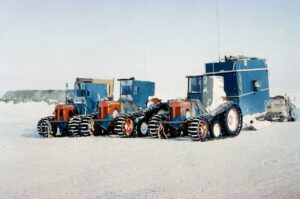
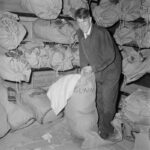 expedition flew one of the planes…a de Havilland Canada DHC-3 Otter—on an 11-hour, 1,430-mile, non-stop trans-polar flight across the Antarctic continent from Shackleton Base by way of the Pole to Scott Base, following roughly by air the same route as Fuchs’ overland party. For his accomplishments, Fuchs was knighted. The second overland crossing of the continent did not occur until 1981, during the Transglobe Expedition led by Ranulph Fiennes.
expedition flew one of the planes…a de Havilland Canada DHC-3 Otter—on an 11-hour, 1,430-mile, non-stop trans-polar flight across the Antarctic continent from Shackleton Base by way of the Pole to Scott Base, following roughly by air the same route as Fuchs’ overland party. For his accomplishments, Fuchs was knighted. The second overland crossing of the continent did not occur until 1981, during the Transglobe Expedition led by Ranulph Fiennes.

